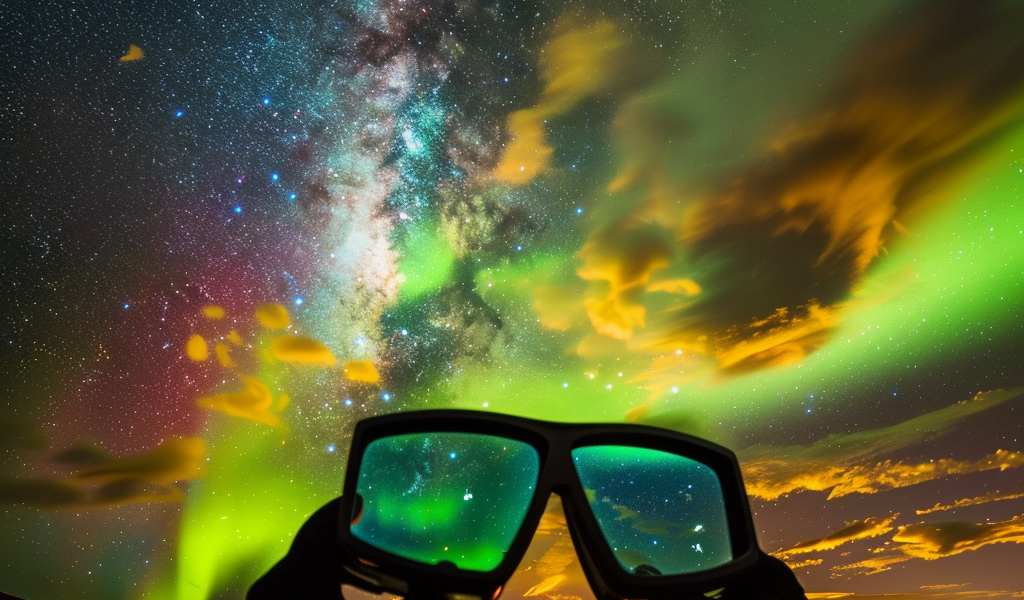If you’re an astronomy enthusiast or simply enjoy the beauty of the night sky, now is the time to dust off those eclipse glasses you may have stashed away. On April 8, 2024, a total solar eclipse captivated millions across North America, and with it, many households acquired a pair of solar filters. However, the excitement doesn’t stop there. This week, solar activity is on the rise, presenting a unique opportunity to witness sunspots and potentially stunning auroras.
Recent observations have revealed an uptick in solar activity, marked by visible sunspots on the sun’s southeast limb. These dark regions, known as sunspots, are significant indicators of the sun’s magnetic activity. Currently, the sun is experiencing a 23-year high in sunspot activity, making this an exciting time for solar observation.
It is crucial to emphasize the importance of safety when observing the sun. The only safe way to look at the sun is through certified solar filters, such as eclipse glasses that meet the ISO 12312-2 international safety standard. Homemade filters, regular sunglasses, or even welding glass are not safe alternatives. For those looking for reliable sources of solar viewing equipment, the American Astronomical Society provides a list of suppliers offering certified solar filters.
On October 3, 2024, the sun unleashed an X9 solar flare, the most powerful recorded in Solar Cycle 25 to date. This intense burst of radiation resulted in spectacular auroras observed around the globe on October 10-11. Following this event, the sun entered a quieter phase, but that calm was short-lived. On October 24, NASA’s Solar and Heliospheric Observatory (SOHO) captured images of an X3.3 class solar flare, which was soon followed by an M1.2 class flare and an M1.1 class flare on October 25. The activity peaked on October 26 with two significant flares, M9.5 and X1.8, occurring within just an hour of each other—a rare occurrence in solar observations.
These flares are primarily emanating from active regions AR3873, AR3872, and AR3869, which are clustered closely together on the sun’s surface. Importantly, these regions are positioned on the Earth-facing side of the sun, meaning any coronal mass ejections (CMEs) they produce could be directed towards our planet. CMEs are massive bursts of solar wind and magnetic fields rising above the solar corona or being released into space. When these charged particles reach Earth, they can interact with our planet’s magnetic field, leading to breathtaking auroras.
As we move into the coming week, the potential for dramatic aurora displays increases. These natural light shows occur when charged particles from the sun collide with atoms in the Earth’s atmosphere, creating beautiful colors that dance across the sky. Locations closer to the poles, such as Canada and Alaska, typically experience the most vivid displays, but strong solar activity can push the auroral oval further south, allowing more people to witness this celestial phenomenon.
For those eager to catch a glimpse of the sun’s activity, now is the perfect time to venture outside with your eclipse glasses. Observing sunspots can provide a fascinating insight into the sun’s behavior and its cycles of activity. As we continue to monitor the sun’s activity, keep an eye on forecasts for auroras, as conditions can change rapidly.
In summary, the current spike in solar activity, marked by sunspots and solar flares, presents an exciting opportunity for sky watchers. With the right safety equipment, enthusiasts can safely observe these phenomena and potentially witness the awe-inspiring northern and southern lights in the coming days.





